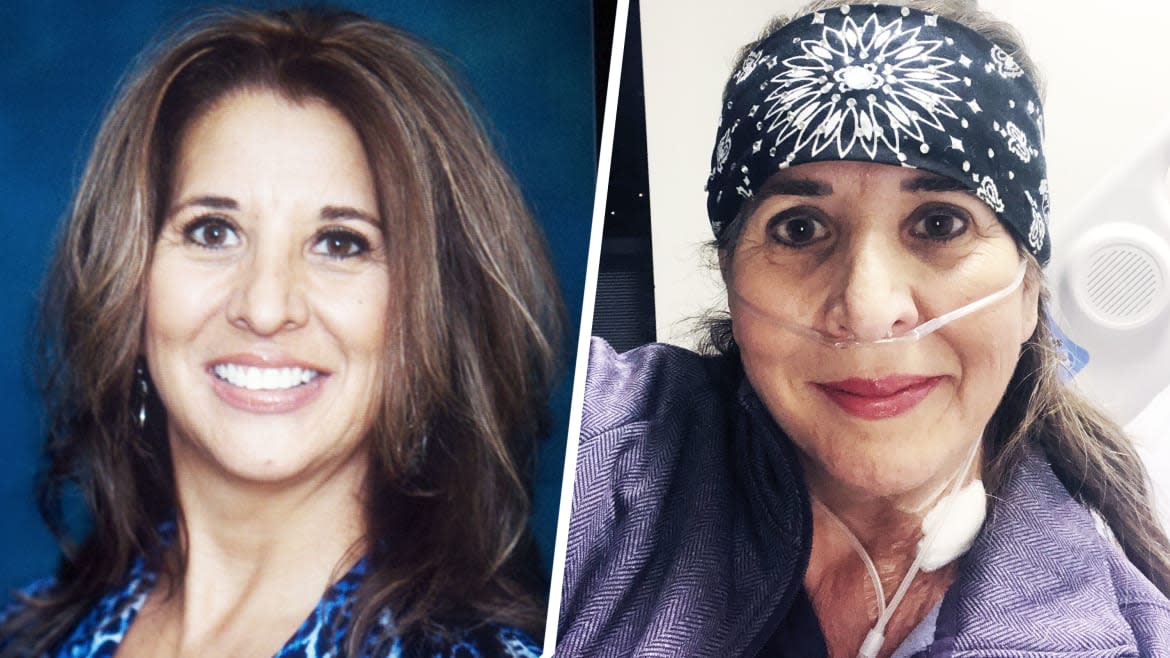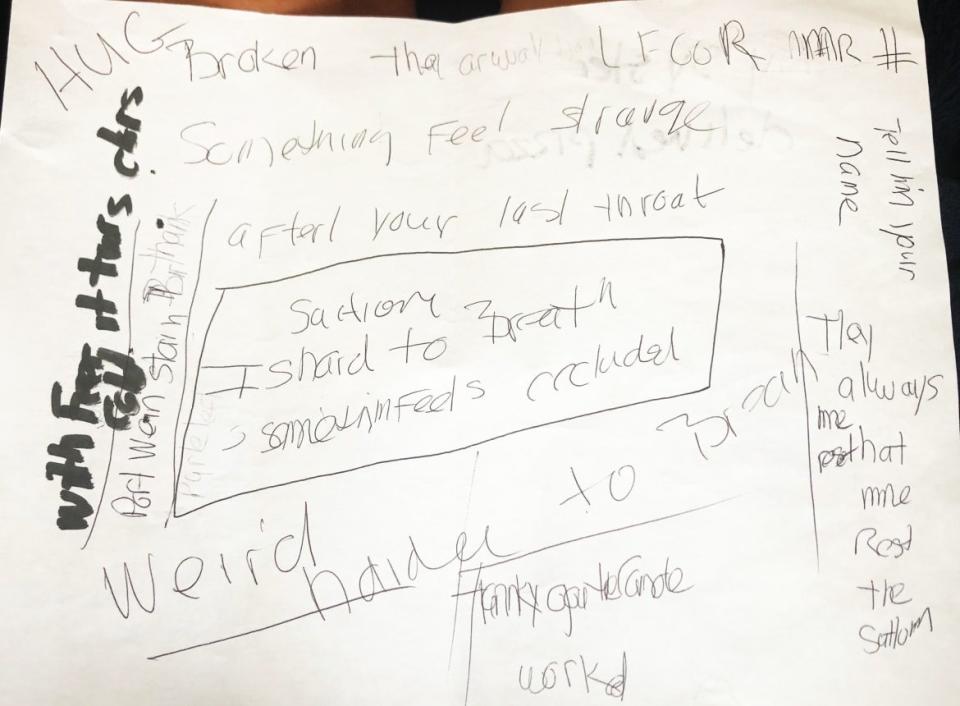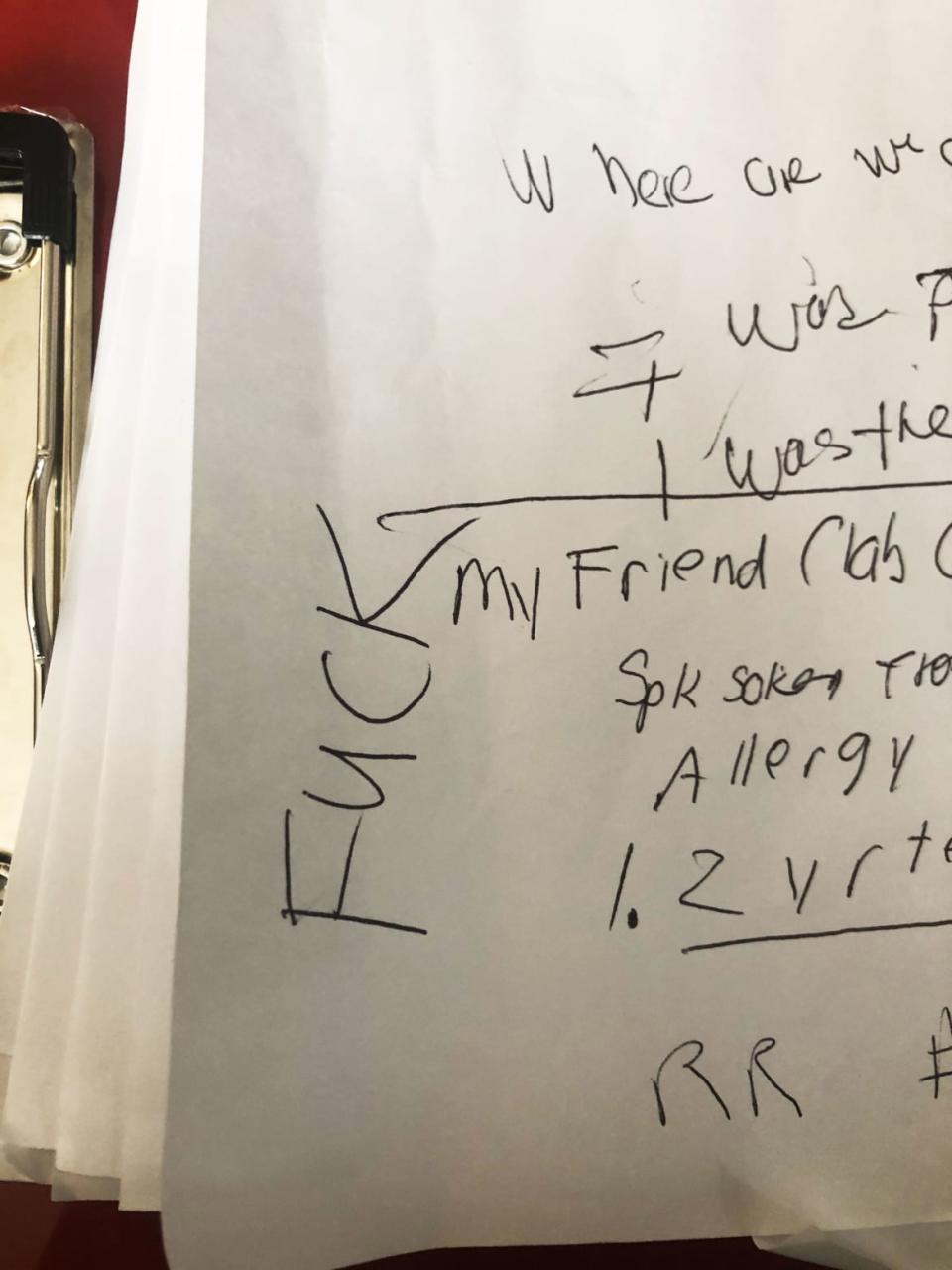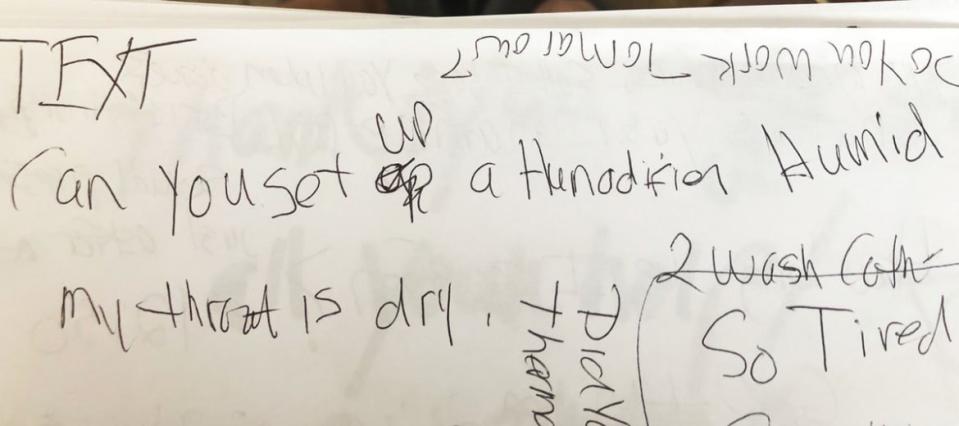’Pray for Me’: A Coronavirus Patient’s Pleas for Help While Intubated

When Yvette Castelazo landed in the hospital with serious complications of COVID-19, she remembers the moment doctors had to cut off her clothes in order to insert a life-saving ventilator down her throat.
The 58-year-old from Southern California had been fighting the illness and the pneumonia it can cause at home for five days, but on March 20, her oxygen dropped to such dangerously low levels, her doctor sent her to Riverside Community Hospital. None of the hospital’s interventions were helping, and on March 27, her critical-care doctor at the hospital told her she'd have to go on a ventilator.
She had a clear sense—and dread—of what was going to happen next. Castelazo, who works for a company that runs hospices and has spent much of her career in the medical world, wondered if those might be the last words she ever heard.
“When they said they were going to intubate me, I knew what that meant,” said Castelazo, who knew that the survival rate of those who go on the breathing machines is dismal. “When my doctor squeezed my hand and told me I needed a ventilator, I said, ‘Please don't let me die.’”
Does a High COVID-19 Viral Load Make You Sicker?
Why All the Ventilators in the World Won’t Solve This
Castelazo had been hospitalized before for previous surgeries, so she had come prepared for the chilly rooms, and wore a tank top under her hospital gown. When the anesthesiologist sedated her in order to insert the breathing tubes down her nose, she was still conscious enough to hear the respiratory therapists complaining about her top. They tried to take it off, but struggled to slide it through the network of tubes attached to her body. "I heard them say, ‘We're going to have to cut it off her,’ and I'm yelling at them in my head, ‘Don't do that! This sucker cost $90!’’
Some of those who have been weaned off of ventilators say that the days and weeks that passed are simply blank. But others, like Castelazo, experienced hallucinations. A devout Christian, she recalled seeing a bright light with three angels with trumpets flying in her direction. “It scared me so much,” she said. “Is this the white light? Is God coming for me? I told myself that if I could just keep my eyes open, I could stay alive.”

A few days later, still feverish, and still intubated and on the ventilator, she became more alert and aware. Unable to speak, she began signing to the nurses with the sign language she’d learned as a child. Finally, one gave her a clipboard with a pen. Sometimes, her words were gibberish. Mostly, they were piercingly clear, communicating what her voice could not. “My throat is dry.” “I feel drugged.” “I feel cold.”
They also revealed her determination—and abject terror. One day she wrote simply: “Please pray for me.”

When nurses would come to suction the fluid collecting in Castelazo’s lungs, she would cough so violently she felt as if she was coughing up her lungs themselves. The nurses instructed her how to suction herself, and on two occasions, she was certain she was going to aspirate and die. “I already had pneumonia but I thought, ‘This is it, this is the end.’”
After the second episode, Castelazo, who rarely swears, scribbled “FUCK” in block letters.

Eventually, Castelazo began breathing on her own in increments of 20 minutes, then 30, then 90, and on April 4, after seven days of being on the ventilator, her doctors finally extubated her. When she saw them withdrawing the long tubes, she said, “I felt like I’d had a giant squid inside me.” She struggled to take her first breaths on her own, and asked for divine help. “God, you need to help me breathe,” she prayed.
She did, and was moved from the ICU to a special COVID-19 unit. Finally, on April 10, she was released. Her boyfriend, John, a Southern California firefighter who is not authorized to speak publicly and had also tested positive for the illness, picked her up from the hospital. She is slowly recuperating at home, reflecting on the words of her favorite poet, Maya Angelou: “Hope and fear cannot occupy the same space at the same time,” Angelou wrote. “Invite one to stay.”

Get our top stories in your inbox every day. Sign up now!
Daily Beast Membership: Beast Inside goes deeper on the stories that matter to you. Learn more.

